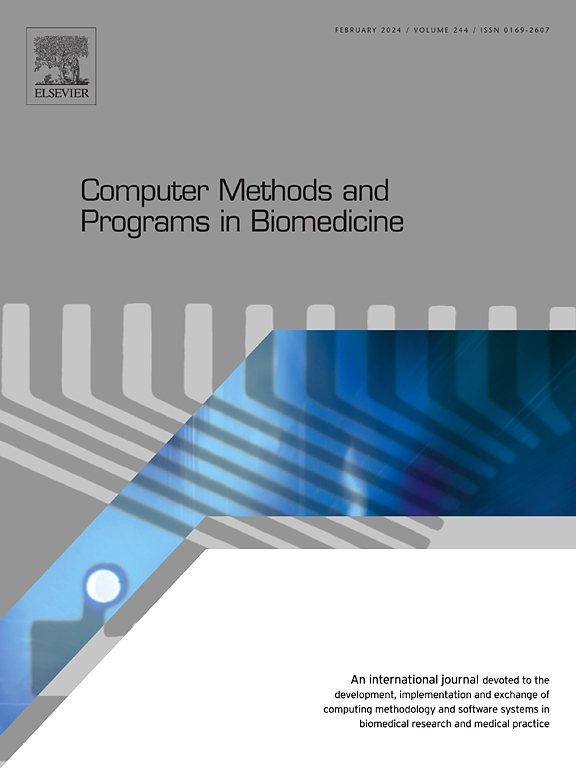Explainable time-to-progression predictions in multiple sclerosis
IF 4.9
2区 医学
Q1 COMPUTER SCIENCE, INTERDISCIPLINARY APPLICATIONS
引用次数: 0
Abstract
Background:
Prognostic machine learning research in multiple sclerosis has been mainly focusing on black-box models predicting whether a patients’ disability will progress in a fixed number of years. However, as this is a binary yes/no question, it cannot take individual disease severity into account. Therefore, in this work we propose to model the time to disease progression instead. Additionally, we use explainable machine learning techniques to make the model outputs more interpretable.
Methods:
A preprocessed subset of 29,201 patients of the international data registry MSBase was used. Disability was assessed in terms of the Expanded Disability Status Scale (EDSS). We predict the time to significant and confirmed disability progression using random survival forests, a machine learning model for survival analysis. Performance is evaluated on a time-dependent area under the receiver operating characteristic and the precision–recall curves. Importantly, predictions are then explained using SHAP and Bellatrex, two explainability toolboxes, and lead to both global (population-wide) as well as local (patient visit-specific) insights.
Results:
On the task of predicting progression in 2 years, the random survival forest achieves state-of-the-art performance, comparable to previous work employing a random forest. However, here the random survival forest has the added advantage of being able to predict progression over a longer time horizon, with AUROC for the first 10 years after baseline. Explainability techniques further validated the model by extracting clinically valid insights from the predictions made by the model. For example, a clear decline in the per-visit probability of progression is observed in more recent years since 2012, likely reflecting globally increasing use of more effective MS therapies.
Conclusion:
The binary classification models found in the literature can be extended to a time-to-event setting without loss of performance, thus allowing a more comprehensive prediction of patient prognosis. Furthermore, explainability techniques proved to be key to reach a better understanding of the model and increase validation of its behaviour.
求助全文
约1分钟内获得全文
求助全文
来源期刊

Computer methods and programs in biomedicine
工程技术-工程:生物医学
CiteScore
12.30
自引率
6.60%
发文量
601
审稿时长
135 days
期刊介绍:
To encourage the development of formal computing methods, and their application in biomedical research and medical practice, by illustration of fundamental principles in biomedical informatics research; to stimulate basic research into application software design; to report the state of research of biomedical information processing projects; to report new computer methodologies applied in biomedical areas; the eventual distribution of demonstrable software to avoid duplication of effort; to provide a forum for discussion and improvement of existing software; to optimize contact between national organizations and regional user groups by promoting an international exchange of information on formal methods, standards and software in biomedicine.
Computer Methods and Programs in Biomedicine covers computing methodology and software systems derived from computing science for implementation in all aspects of biomedical research and medical practice. It is designed to serve: biochemists; biologists; geneticists; immunologists; neuroscientists; pharmacologists; toxicologists; clinicians; epidemiologists; psychiatrists; psychologists; cardiologists; chemists; (radio)physicists; computer scientists; programmers and systems analysts; biomedical, clinical, electrical and other engineers; teachers of medical informatics and users of educational software.
 求助内容:
求助内容: 应助结果提醒方式:
应助结果提醒方式:


